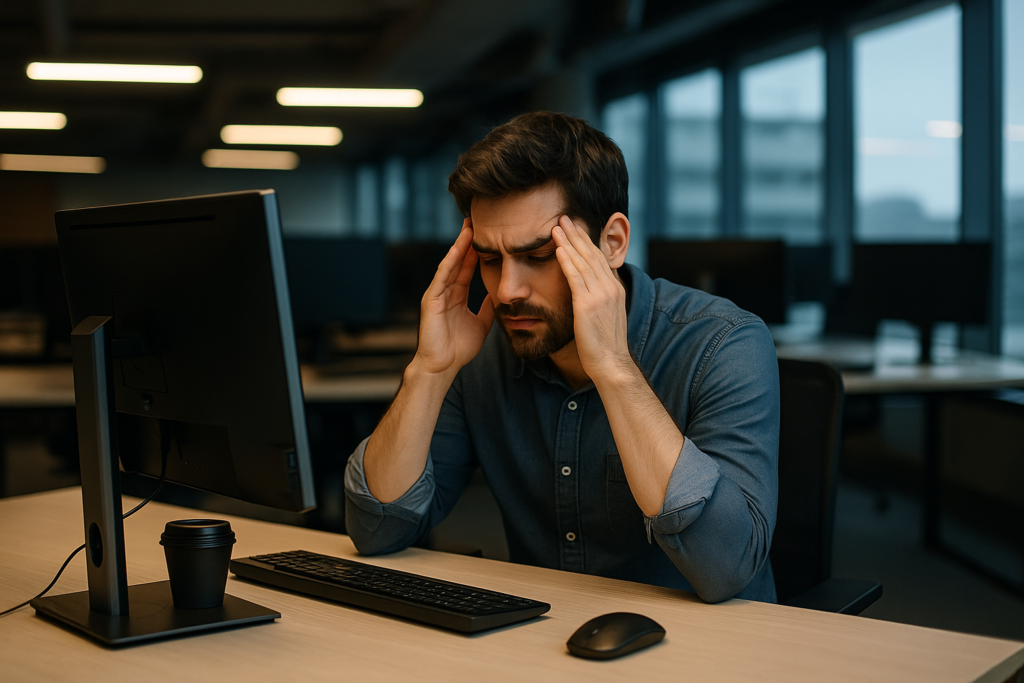The Modern Epidemic of Back Pain
Back pain is becoming a modern epidemic, especially among individuals who lead sedentary lifestyles. Whether it’s due to long hours spent at a desk, frequent screen time, or lack of physical activity, back pain is a common complaint in today’s fast-paced world. What many people don’t realize is that sitting for extended periods is silently contributing to poor spinal health, leading to chronic pain and discomfort. Our bodies are not designed to remain stationary for long periods, and yet modern work culture demands it, often resulting in improper sitting postures that can cause long-term damage.
The question of how we sit—whether in a chair, cross-legged on the floor, or slouched over our devices—is more critical than ever. In this article, we’ll delve into the ergonomics of sitting, examine alternative sitting positions, and rethink how modern habits might be shaping a generation with spinal health issues. Understanding how to sit correctly and making small adjustments can significantly reduce the strain on our spines and prevent future discomfort.
The Sitting Aesthetics We’re Underestimating
Most people don’t give much thought to how they sit, but the aesthetics of sitting—our posture and the angles at which we hold ourselves—play a huge role in our spinal health. The typical sitting posture many adopt involves slouching, leaning forward, or hunching over a desk or screen. These positions place significant strain on the lower back, neck, and shoulders. When the spine is not properly aligned, the natural curvature is disrupted, leading to uneven weight distribution and increased pressure on specific parts of the spine.
Slouching compresses the discs in the lower back, which can lead to long-term issues like herniated discs or chronic pain. Additionally, leaning forward, a common posture when using computers or phones, can cause a condition known as “tech neck,” where the neck muscles become strained due to the forward tilt of the head. These poor sitting habits also contribute to muscle stiffness, reduced flexibility, and overall fatigue.
However, the good news is that small adjustments can drastically improve sitting posture. Simple tips like keeping feet flat on the floor, aligning the back with the chair’s support, and taking regular breaks to stretch can go a long way in reducing back strain. Awareness of how we sit is the first step in preventing back pain before it becomes a chronic issue.
Is Sitting Cross-Legged the Best Approach?
Sitting cross-legged, particularly on the floor, is a common practice in many cultures and is often associated with better spinal alignment. In yoga and meditation, sitting cross-legged, or in lotus position, is considered one of the best ways to sit as it promotes a neutral spine and encourages the body to engage its core muscles for balance. Unlike sitting in a chair, where slouching is easier, sitting cross-legged naturally helps maintain an upright posture, aligning the spine in its natural curve.
One of the primary benefits of sitting cross-legged is that it allows the pelvis to tilt slightly forward, which helps support the natural lumbar curve. This position engages the muscles in the back and abdomen, which are crucial for maintaining proper spinal alignment. Additionally, sitting cross-legged distributes weight more evenly across the hips and legs, reducing pressure on the lower back.
Certain cultures, particularly in Asia, have a long history of sitting on the floor during meals, meditation, or daily activities, and studies suggest that these populations have a lower incidence of back pain compared to those who predominantly use chairs. For example, in countries like Japan or India, where cross-legged sitting is common, there is a cultural emphasis on flexibility and core strength, which helps support spinal health.
However, it’s important to note that sitting cross-legged may not be suitable for everyone, particularly those with knee or hip problems. The key is to listen to your body and find a sitting position that encourages proper alignment without causing discomfort.
Are Chairs Really Ideal? Rethinking Modern Furniture
While chairs have become the go-to seating option in most modern environments, they may not be as ideal for human health as we think. Most traditional chairs are not designed with spinal health in mind, often encouraging poor posture and prolonged sedentary behavior. The standard chair with a flat seat and stiff backrest fails to accommodate the natural curvature of the spine, leading to slouching, forward-leaning, and lower back strain over time.
In contrast, alternative seating options like ergonomic chairs, which provide lumbar support and promote proper alignment, are becoming increasingly popular. These chairs encourage a more upright position and reduce the pressure on the lower back. Kneeling chairs are another option that tilts the pelvis forward and encourages the spine to maintain its natural curve, reducing strain on the lower back and engaging the core muscles. Additionally, standing desks offer a dynamic way to work, allowing users to alternate between sitting and standing, which promotes movement and reduces the risk of back pain caused by prolonged sitting.
Sitting in chairs for extended periods has also been linked to reduced agility and overall muscle weakness. When we sit too long, we’re not engaging the muscles needed to support our spine, which can lead to stiffness and reduced flexibility. Rethinking how we use chairs and incorporating alternative seating options can help reduce the long-term impact on our spine, keeping us more agile and reducing the likelihood of chronic back issues. In the end, the best way to sit might involve mixing up our positions, integrating more movement, and considering whether modern furniture is truly serving our health.
The Long-Term Consequences: A Generation of Spine Problems?
Poor sitting habits are setting the stage for a generation that could face chronic back pain and severe spinal issues. The trend of sedentary lifestyles, exacerbated by long hours in front of screens and poorly designed workspaces, is leading to an increase in spine-related problems, especially among young adults. Research shows that prolonged sitting is linked to spinal misalignment, muscle degeneration, and even conditions like sciatica and herniated discs. What’s more concerning is that these problems may appear earlier in life due to bad posture adopted from a young age.
According to a study published in the journal Spine, approximately 80% of adults will experience lower back pain at some point in their lives, and much of this can be attributed to poor sitting habits. Prolonged sitting not only causes physical discomfort but also reduces flexibility, weakens core muscles, and accelerates muscle degeneration. In children and teenagers, extended periods of sitting can interfere with the development of proper posture, setting them up for future problems.
Beyond the physical impact, sitting-related health problems are also linked to mental and emotional health. A sedentary lifestyle can contribute to feelings of sluggishness, depression, and anxiety, as movement is essential for maintaining both physical and psychological well-being. If this trend continues, we may be looking at a generation that suffers from not only spine-related issues but also the compounded effects of decreased mobility and vitality.
Where’s the Agility in Daily Life?
Modern sedentary lifestyles have led to a decline in agility and flexibility—two critical components of physical health. Prolonged sitting not only weakens the muscles in the back and core but also reduces overall movement, which is essential for maintaining joint health and flexibility. In contrast, cultures and periods where physical activity was naturally integrated into daily life saw far fewer issues related to stiffness or back pain.
In the past, human beings engaged in more dynamic activities, whether it was through manual labor, walking long distances, or simply having fewer sedentary jobs. Today, we are spending more time at desks, in cars, or lounging in front of screens, and this lack of movement leads to stiffness, poor circulation, and eventually joint problems. Reduced agility not only increases the risk of injuries but also accelerates the decline in mobility as we age.
This lack of movement is especially detrimental to the spine, which relies on flexibility and support from surrounding muscles to maintain alignment and health. The longer we sit without engaging in regular physical activity, the harder it becomes to maintain this agility, leading to stiffness, joint pain, and long-term health decline. In many ways, our modern lifestyles are contributing to the widespread decline in physical agility, with the consequences becoming more apparent as the effects accumulate over time.
Practical Tips to Improve Sitting Habits and Avoid Back Pain
Improving sitting habits is essential for maintaining spine health and preventing back pain. Here are some actionable tips to ensure better posture and spinal support while sitting:
- Adjust Your Chair: Make sure your chair is ergonomically suited to support your lower back. The seat height should allow your feet to rest flat on the floor, with your knees at a 90-degree angle. Use a chair that provides lumbar support to maintain the natural curve of your spine.
- Foot Placement: Your feet should be flat on the ground or resting on a footrest, rather than dangling or crossed. This helps distribute weight evenly and reduces strain on the lower back.
- Desk Ergonomics: Ensure that your computer screen is at eye level to prevent hunching over. Your elbows should be at a 90-degree angle, with your wrists straight and your shoulders relaxed.
- Take Regular Breaks: One of the most effective ways to combat prolonged sitting is to take short breaks every 30 minutes. Stand up, stretch, or walk around to relieve pressure on your spine and improve circulation.
- Incorporate Standing Desks: If possible, use a standing desk or one that allows you to alternate between sitting and standing. This helps prevent long periods of static sitting and keeps your muscles engaged.
- Stretching and Movement: Incorporating daily stretches, especially for the lower back, hamstrings, and hip flexors, can prevent stiffness and improve flexibility. Activities like yoga or pilates also promote spinal health by strengthening core muscles and enhancing posture.
By integrating these habits into your daily routine, you can significantly reduce the risk of back pain and improve your overall spinal health.
Rethinking How We Sit for a Healthier Spine
Sitting may be a modern necessity, but how we sit can make all the difference for long-term spinal health. Being mindful of posture, taking regular breaks, and incorporating movement into our daily lives can prevent many of the back-related issues that stem from poor sitting habits. The key is to stay aware of the impact that prolonged sitting has on our bodies and take proactive steps to mitigate that damage.
By making small adjustments today—whether it’s improving your chair, stretching regularly, or simply being more conscious of how you sit—you can prevent spine problems in the future. As we continue to live in an increasingly sedentary world, it’s crucial to rethink our sitting habits and embrace a more active, mindful approach. By doing so, we not only protect our spines but also ensure that future generations aren’t burdened by the same issues.




